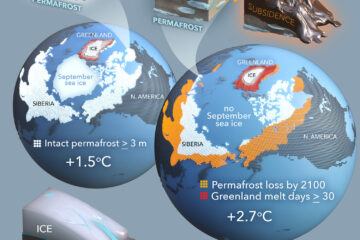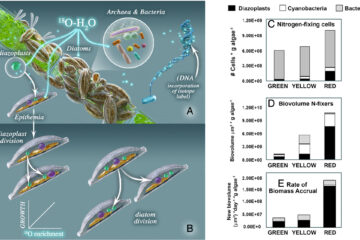Effects of travertine and flow on leaf retention in Fossil Creek, Ariona
Leaf retention is important in transferring energy from riparian trees to stream food webs. Retention increases with geomorphic complexity such as substrate coarseness, sinuosity, and the presence of debris dams. High discharge can reduce retention, particularly when streams lack physical trapping features. Travertine formations, caused by calcium carbonate deposition, can alter stream morphology. To date, however, we know of no study testing the effect of travertine on leaf retention. This study capitalized on a river restoration project in Fossil Creek, Arizona, where water was returned to the channel after a century of diversion. We examined how the fixed factors Flow (before and after restoration) and Morphology (travertine and riffle-pool sites) affected leaf retention. Leaf retention was higher in sites where travertine forms barriers across the river, relative to sites with riffle-pool morphology. Most leaves retained in travertine reaches were concentrated at the bottom of pools formed between dams. Although flow restoration did not alter retention rates across all sites, it diminished them at travertine sites, indicating an interaction between stream flow and morphology. We conclude that stream complexity and leaf retention are enhanced by travertine deposition but that high discharge can reduce the retentive capacity of in-stream structures.


